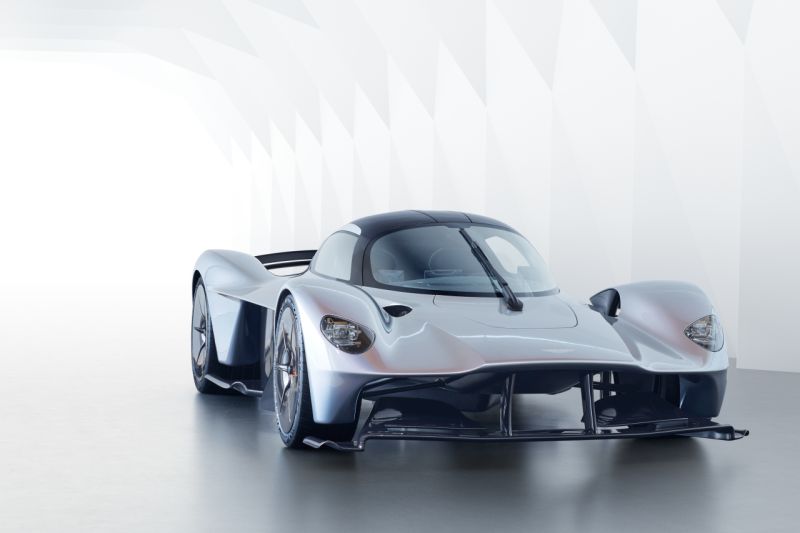
Wind the clock back to 2016 when Aston Martin revealed a concept car jointly developed by Red Bull Racing Formula 1 team code named the AM-RB 001. Earlier this year, Aston Martin reported that the car would be called the ‘Valkyrie’ – which gets its name from Norse mythology and also keeps in tradition Aston Martin ‘V’ cars which distinguishes the vehicle as a high performance car, which began back in 1951. Here is the latest of what we know about the Valkyrie.
The Aston Martin Valkyrie is a hypercar jointly developed with Red Bull Racing and claims to be a F1 car for the road. The Valkyrie was designed by Red Bull Racing’s Chief Technical Officer and one of the greatest F1 designers, Adrian Newey, who had seen success with Williams and McLaren in the past.
Aston claim of wanting to make a hypercar which had a hair raising 1:1 power-to-weight ratio (one horsepower for every kilogram of weight). Aston have announced that they have instead produced a car which has surpassed their expectation. The Valkyrie claims to make around 1,000 PS from its 6.5-litre naturally-aspirated Cosworth V12 motor. Also paired to the motor is a Rimac-built KERS Hybrid drive system. Combined with the petrol engine, it makes an eye-watering 1,130 PS while only weighing in at 1,030 kg. That’s a power-to-weight ratio of 1,097 PS/tonne! The power flows through a specially-developed seven-speed paddle-shift transmission developed by Ricardo.

The Aston Martin Valkyrie will sit on specially-designed tyres from Michelin. The Pilot Sport Cup 2 rubber, 265/35 ZR 20 at the front and 325/30 ZR 21 at the rear, will be mounted on lightweight magnesium alloy wheels featuring race-specification centre-lock nuts to further reduce unsprung mass.
Since the first reveal of the Valkyrie hypercar in July last year, Aston Martin, Red Bull Advanced Technologies and project partner AF Racing have been working to further develop the Valkyrie’s aerodynamics, body styling and cockpit packaging. The exterior of the Valkyrie is extremely aerodynamic and is capable of producing incredible amounts of downforce under acceleration. Aston Martin have taken a cleaner approach to styling by maintaining the purity of the design, channelling huge amounts of air to the rear diffuser, eliminating the need for large wings or spoilers.
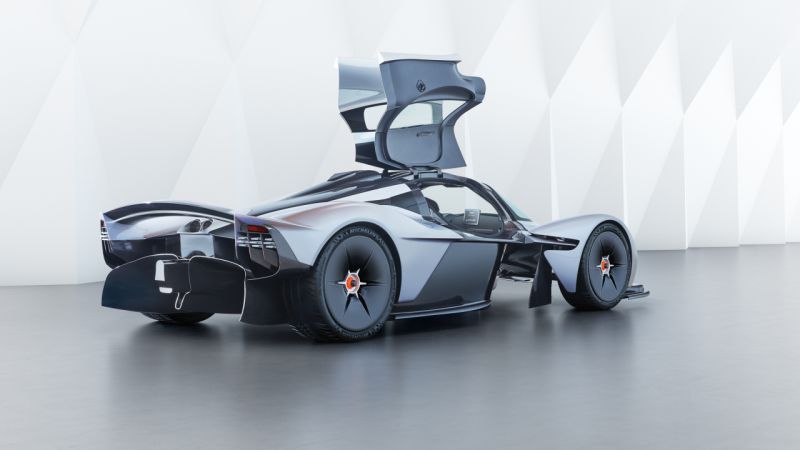
To maximise the interior space, the seats are mounted directly to the tub, with occupants adopting a reclined ‘feet-up’ position reminiscent of today’s Formula 1 and Le Mans Prototype race cars, ensuring driver and passenger are extremely safe, perfectly supported, and feel one with the car. A four-point harness comes as standard, while an optional six-point harness is offered for those who intend to do more track driving.
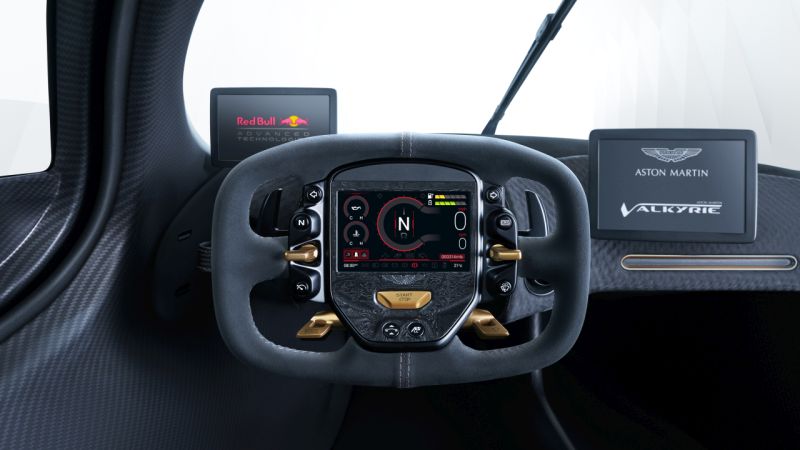
Aston Martin Design have attempted to keep distractions to a minimum and focus the driver on the road ahead. All the switchgear is located on the steering wheel, with all the vital signs shown on a single OLED display screen. The steering wheel is also detachable, both to aid ingress and egress, and to serve as an additional security device.
Aston Martin have taken the glasshouse design to ensure forward and side-to-side vision is uninterrupted. To avoid any unwanted aerodynamic disturbance the traditional door mirrors have been replaced by cameras in each of the Valkyrie’s flanks, which claim to provide more view than conventional door mirrors. The all-enveloping bodywork and roof-mounted engine air-intake means there is no rear window, and no requirement for a rear-view mirror.
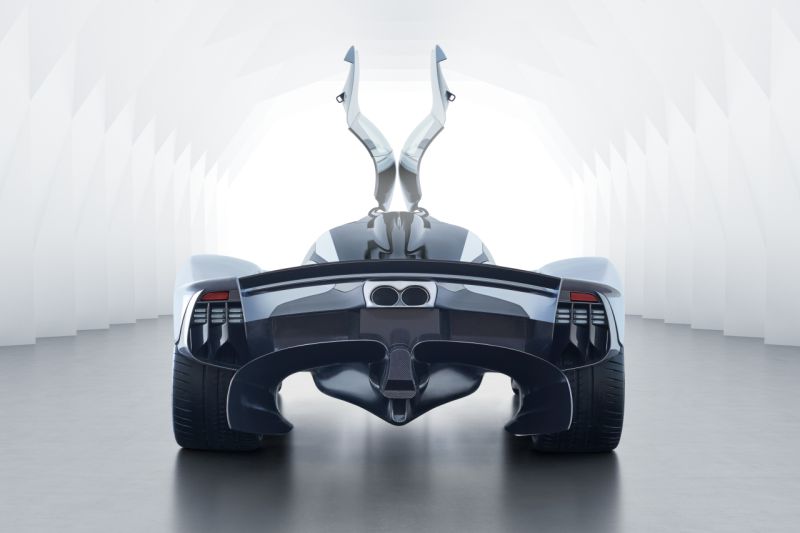
Matt Hill, Aston Martin Creative Director of Interiors said of the Aston Martin Valkyrie’s cockpit design: “It’s been a tremendous challenge to make the interior packaging work. We’ve embraced Red Bull Racing’s Formula 1 ethos and approached from a different angle than conventional road car design. In this instance, we’ve started from a position where you think something is impossible and work at it until you find a way to make it work. We’ve been fighting for millimetres everywhere, but the battle has been worth it, as it’s been fantastic seeing customers try the interior buck for size. They love the ritual of getting in and how it feels to be sat behind the wheel. They’re also genuinely surprised at how the car just seems to swallow them. You really do have to sit in it to believe there is genuine space for two large adults.”
While aerodynamics and downforce have been key to the Valkyrie, there are some incredibly striking details. Some of those details being the headlights, where the Aston Martin engineers stripped things to their bare essentials and creating a headlight unit which is 30-40 per cent lighter than the lightest series of production headlamps available at Aston Martin. A similar approach was also taken to the famous Aston Martin ‘wings’ badge on the front nose. With the regular badge considered too heavy for this light-weight vehicle, the Aston Martin Design team came up with a chemical etched badge just 70 microns thick, which is 30 per cent thinner than a human hair, and 99.4 per cent lighter than the regular ‘wings’ badge (nicknamed the ‘lacewing’) attached to the painted body, and covered in a coat of lacquer.
Aston Martin Creative Director of Exterior Design, Miles Nurnberger, said of the Aston Martin Valkyrie’s design evolution: “I would say we’re around 95 per cent of the way there with the exterior design. Much of what you see is actually the structure of the car, so this had to be signed-off relatively early in the project. The remaining areas of non-structural bodywork are still subject to evolution and change as Adrian [Newey] continues to explore way of finding more downforce. The new outlets in the body are a case in point. Ordinarily the last thing we’d want to do to one of our surfaces is cut a hole in it, but these vents work the front wings so much harder that they’ve found a significant gain in front downforce. The fact that they are so effective gives them their own functional beauty, but we’ve finessed them without impacting on their functionality. That they also serve as windows through which to view the fabulous wing section front wishbones is a welcome bonus!”
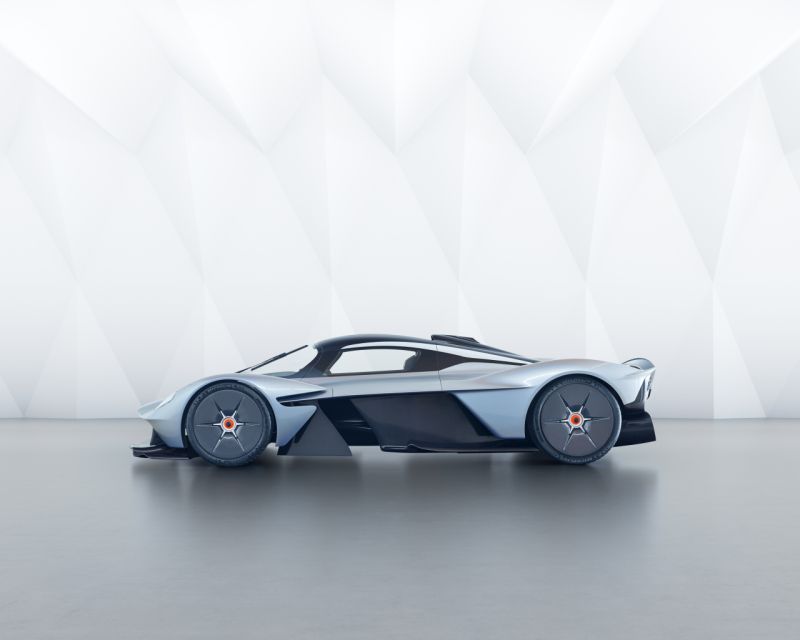
The Valkyrie is going to be produced in very limited numbers, just 150 will be made. With each one costing over € 3 million (Rs 21.6 crore). Each Aston Martin Valkyrie will be tailor-made for its owner, with Aston Martin 3D scanning the individual for the interior, to make it as comfortable as possible. Aston Martin plan to have a running prototype of the Valkyrie by 2018, with customer deliveries set for 2019. It seems James Bond will have to wait a while or probably till the next movie to get his hands on his Valkyrie.
Story: Sahej Patheja




















Leave a Reply